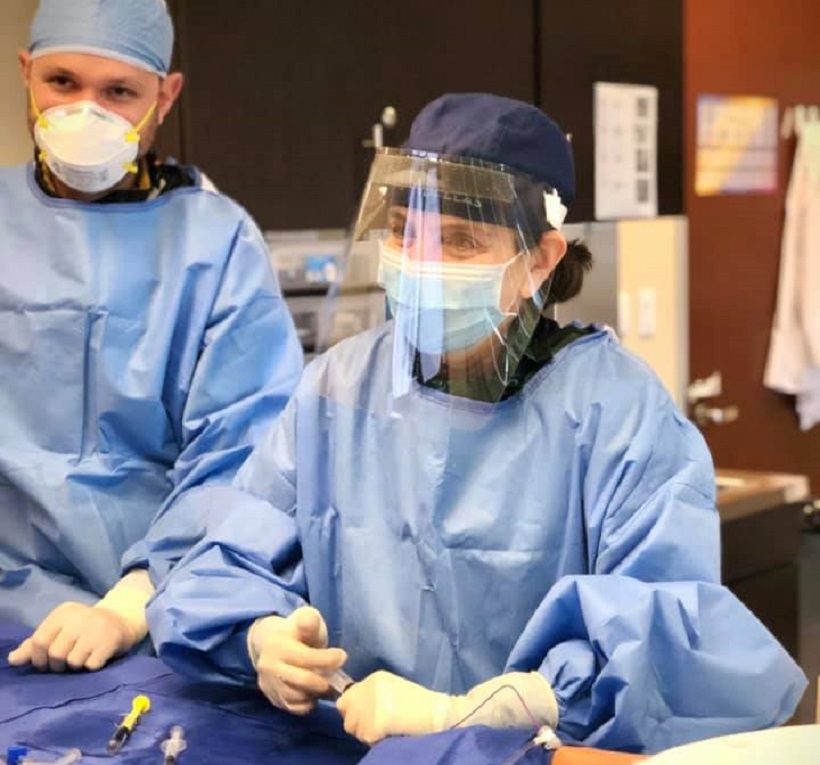As medical practitioners who work a demanding schedule characterized by long work shifts, stressful on-call duties, and a never-ending push to provide the best care for patients, we understand how easy it is to experience physician burnout.
More than 50% of physicians report suffering from at least one burnout symptom. Many busy physicians are so involved in their practice and patient care that they may not know how—or feel they have the time—to take a step back and effectively manage their own physician burnout symptoms.
Burnout Signs that Deserve Attention
- Stress
- Emotional exhaustion
- Lack of interest in job and limited sense of accomplishment
- Sleep deprivation
- Cynicism toward the healthcare industry
- Loss of purpose
- Depression
- Substance abuse
- Memory issues
- Loss of executive function
- Thoughts of suicide
- Depersonalization
Causes of Physician Burnout Among Leading Healthcare Professionals
According to the Agency for Healthcare Research and Quality, the causes of physician burnout run the gamut. Chaotic environment appears to be the biggest issue. Physicians are routinely bombarded with ballooning patient lists, time pressures, lack of help around them, and limited control over work pace. More than half of the physicians they spoke to reported experiencing time pressures when conducting patient exams, which leads to poor patient care, medical errors, and overall job dissatisfaction.
Nearly a third of that same group felt they needed at least 50% more time than what they were being allotted for the patient care function, and a quarter said they needed more time for follow-up appointments.
Additional concerns physicians are expressing include:
1. Electronic health records
Filing health records electronically is more efficient than the old days of writing everything down. But implementing such processes and other administrative tasks can contribute to burnout, especially in smaller settings where the primary care physician is a one-person show.
2. Family responsibilities
Physicians have families, and time spent with their spouse/partner, children and other family members becomes increasingly limited with burgeoning responsibilities in the workplace.
3. Growing patient demands
Patients expect more from their healthcare providers. As a result, physicians across all disciplines are tasked with adapting to increased needs to keep patients happy and coming back.
4. Online reputation
It goes without saying that a positive online reputation is especially important these days. Concerns over potential negative reviews are constantly on the mind of doctors nationwide.
5. The need to be perfect
Make no mistake about it; physicians are highly educated and got into their profession because they want to take care of people and engage in meaningful work. This also leads to burnout because doctors are bent on providing perfect care, which is not always possible in today’s demanding healthcare environment.

5 Tips to Help Manage Physician Burnout
Research shows that physician burnout is increasing every day. The first step in managing physician burnout is for physicians and/or organizations they work for to recognize it and secondly take the initiative to address it.
Here are a few tips to consider:
1. Employee recognition
According to John Hopkins Medicine, physicians experience increased job satisfaction when their department leaders keep them informed, support their career development, ask for their opinion on improving the working environment, and consistently recognize good work. Like any other profession, if a doctor feels valued and supported, burnout is less likely even in the most stressful of situations.
2. Flexible work schedules
This can include everything from offering flexible or part-time work schedules to allowing for more one-on-one time with patients. It can also involve providing set times during the workday to complete required documentation and enter key patient data.
3. Delegate and improve practice efficiency
Many doctors feel like they are responsible for doing everything and choose to be hands-on in all aspects of the practice. Others are forced into that situation. Hiring staff to help with electronic health records, patient onboarding, tracking forms, dealing with insurance claims, and other tasks can boost morale and decrease the workload and burnout many doctors experience.
4. Maintain a healthy work-life balance
Physicians have an intense desire to take care of all their patients’ needs. But they often forget to take care of themselves, too. Examples of work-life balance include limiting work hours to spend more time with family, exercising regularly, maintaining a healthy sleep schedule, listening to music, and scheduling regular time off to allow time for recharging.
5. Build connections with colleagues
Physicians knowing they are not alone in the daily healthcare grind can go a long way in eliminating burnout. Having open and honest conversations with staff and colleagues boosts morale. It allows doctors to express themselves in a healthy way while receiving feedback from people who understand their position. Having a go-to referral source to help treat difficult patient cases also helps.
Fibroid Institute Dallas Supports Our Referral Providers
At Fibroid Institute Dallas, we understand physician burnout is a real problem. While we cannot be there in the grind with you every day, we have become a reliable resource for physicians, gynecologists, family practitioners, and other women’s healthcare professionals who need stress-free non-invasive treatment options for managing difficult cases related to fibroid symptoms.
Suzanne Slonim, MD knows from experience the pressure her colleagues face every day. She provides ongoing support and makes it easy for you to partner with Fibroid Institute Dallas. With Dr. Slonim, you can feel confident your patients are treated as you would treat them yourself.
Partnering with Suzanne Slonim, MD Is Stress-Free
- Easy 3-step process for your patients: 1) Consult – 2) MRI – 3) UFE
- Easy 2-step process for you: 1) email or fax referral – 2) give patient a brochure
- Fibroid Institute Dallas calls your patient to schedule the consultation
- Patient is tracked, contact Fibroid Institute at any time for status
- Fibroid Institute Dallas handles MRI orders
- You receive updates: 1) patient scheduled – 2) UFE completed – 3) Follow up completed
- Dr. Slonim handles all patient pain management
- High success rate: Patients return with little to no symptoms
- No loss of your patients to competitors. You continue routine medical care
At Fibroid Institute Dallas, we know that for many women with uterine fibroids, a hysterectomy or myomectomy is the recommended treatment. However, we also understand these are not the right fit for all patients in every case—especially fibroid patients who are not eligible for surgery or refuse surgery. If you do not currently have an alternative for these patients, please consider recommending Fibroid Institute Dallas and Uterine Fibroid Embolization (UFE).

Uterine Fibroid Embolization (UFE) is a highly effective non-surgical treatment option for women with symptomatic uterine fibroids who are not candidates for or do not want a hysterectomy or myomectomy. UFE allows a woman to keep her uterus. As an experienced board-certified interventional radiologist, Suzanne Slonim, MD, inserts a small catheter into the radial artery and advances it to the location of the fibroids. She then injects small particles, causing the fibroids to shrink and die.
UFE Advantages for Your Patients
- Alternative to surgery (can be performed under local anesthesia or moderate sedation)
- No blood loss
- All fibroids may be treated at the same time
- Uterus is spared
- No scarring
- In-office procedure instead of hospital stay
- Procedure typically takes less than an hour
- Shorter recovery period, 7 days in most cases
- Fibroid symptoms improve dramatically
Suzanne Slonim, MD founded Fibroid Institute Dallas with your fibroid patient in mind. Highly rated by patients with five-star reviews, Dr. Slonim has performed more than 30,000 procedures in over 25 years. A 2020 Women in Business award recipient honored by the Dallas Business Journal, she is voted D Magazine’s top doctor in her category by other doctors and listed in 2020 Super Doctors by Texas Monthly.
Dallas UFE expert Dr. Slonim is available to collaborate with you on your challenging fibroid cases. She has developed a specific treatment algorithm so patients have a high success rate with minimal discomfort. In addition, referring to Dr. Slonim facilitates not losing your patients to competitors. After the UFE procedure and all follow-ups are completed, you continue routine medical care with patients who are now fibroid free.
Fibroid Institute Dallas serves the DFW area including Duncanville, DeSoto, Cedar Hill, Lancaster, Cockrell Hill, Grand Prairie, Arlington, Mansfield, HEB, Fort Worth, Hutchins, Irving, Highland Park, University Park, Park Cities, Garland, Mesquite, Richardson, Addison, Carrollton, Plano, Allen, Dallas, North Dallas, and all of North Texas.

